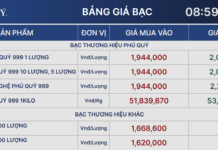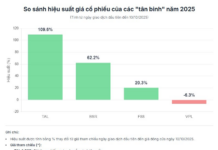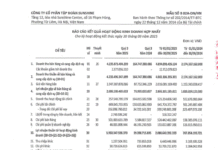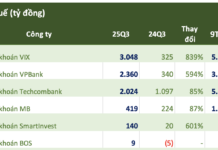There has been a significant increase in Chinese investment in Vietnam in recent years. To gain further insights into this matter, the Vietnam Industry and Trade Newspaper’s reporter had an interview with Mr. Ha Gia Ke, Vice Chairman of the Guangxi Enterprises Association (under the China Enterprises Association in Vietnam).

Mr. Ha Gia Ke, Vice Chairman of the Guangxi Enterprises Association, under the China Enterprises Association in Vietnam (Photo: Nguyen Hoa)
Many observers argue that there is a strong wave of Chinese business investment in Vietnam. What are your thoughts on this matter?
Indeed, there has been a robust wave of Chinese business investment in Vietnam recently. In my opinion, there are numerous reasons why Vietnam has become attractive to foreign investors, including those from China. Firstly, it is essential to acknowledge that Vietnam is a rapidly growing market, with high and stable economic growth over an extended period. Additionally, the country boasts political stability, an improving labor force, and relatively open and transparent investment attraction policies.
The trade conflict between China and the United States, along with the high tariffs imposed by the European and American markets on Chinese exports, have further fueled Chinese businesses’ investment in Vietnam. Meanwhile, Vietnam’s participation in numerous free trade agreements means that Chinese companies investing in Vietnam will benefit from preferential treatment when exporting goods to Europe, the United States, and other countries worldwide.
In which sectors are Chinese businesses primarily focusing their investments in Vietnam, Mr. Ha?
Chinese investors are interested in various sectors in Vietnam, with a particular emphasis on the processing and manufacturing industry. Specifically, they are targeting the electronics component supply chain. Previously, major global electronics corporations invested in China, but some have since shifted their investments to Vietnam. As a result, companies within the supply chain have had to follow suit, making electronics a key investment sector for Chinese businesses in Vietnam.
In addition to the electronics component industry, new energy products such as solar energy and logistics are also attracting the attention of Chinese investors in Vietnam. These sectors align with Vietnam’s priorities and are areas where Chinese companies have a competitive advantage.

There is a strong wave of foreign investment in Vietnam (Photo: Khanh Linh)
In the long run, what should Vietnam do to enhance its attractiveness to foreign investors in general and Chinese investors in particular, in your opinion?
Vietnam’s investment environment is already appealing to foreign investors, including those from China. However, there are still some bottlenecks that need to be addressed. While Vietnam’s investment attraction policies are considered open, there is a lack of consistency and unity among local governments during the implementation phase, creating obstacles for foreign investors when executing their projects in Vietnam.
Additionally, Vietnam’s logistics costs remain high, increasing the overall costs for investors when implementing projects here. To enhance its attractiveness, Vietnam should consider reducing logistics costs.
Furthermore, rental costs for factories and warehouses in Vietnam are also on the rise, especially in provinces like Bac Ninh and Bac Giang. Consequently, Chinese investors, including large corporations that have already established a presence in Vietnam, are now looking toward other northern provinces that are actively attracting investments and offering more competitive land, tax, and investment incentive policies at lower costs.
Thank you for your insights, Mr. Ha!
|
According to data from the Ministry of Planning and Investment, as of July 2024, Chinese investors had invested in 4,750 projects in Vietnam, with a total registered capital of 28.544 billion USD, spanning 19 sectors and fields. The processing and manufacturing industry accounted for the majority of these projects, with 2,630 ventures and a total registered capital of over 22.7 billion USD. This was followed by the real estate sector, with 92 projects and a total registered capital of 1.359 billion USD… Tay Ninh province attracted the most investment from China, with 104 projects and a total registered investment of 4.82 billion USD. Bac Giang province came in second, with 183 projects and a total registered investment of 2.278 billion USD. Binh Thuan province ranked third, with 9 projects and a total registered investment of 2.039 billion USD. Meanwhile, according to Mr. Gu Chao Qing, Chairman of the China Enterprises Association in Vietnam, the Association currently has over 4,000 members operating in various provinces and cities across Vietnam, from the North to the Central and Southern regions. |






































